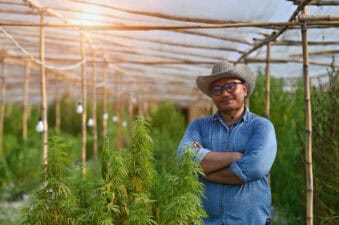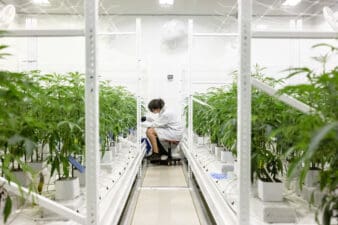The strife-torn South American nation of Colombia has embarked on an ambitious undertaking to reinvigorate its weak economy and reduce its dependence on oil by becoming a leading global producer of medical marijuana products. For a wide variety of reasons, this may not be as daunting as it seems. Colombia, by virtue of its equatorial climate and natural diversity, possesses a significant comparative advantage over Canada and other jurisdictions where cultivation is legal.
Outstanding competitive advantage
These include a wide range of climate zones with consistent, steady sunlight over 12-hour periods, stable rainfall, and a temperate climate. That means there is no need for high-cost climate-controlled greenhouses, because open-air cultivation is practicable. This — along with significantly lower start-up, labour costs and other operating expenses coupled with a long-established, deep multi-generational history of marijuana and cut flower cultivation — further enhances Colombia’s comparative advantage.
In 2017, the administration of then president and Nobel Laureate Juan Manuel Santos forged a legal and regulatory framework that created a stable, transparent, and accessible environment for the legal cultivation of marijuana. This is now being viewed very favourably by many industry participants outside the Andean nation.
Oil’s prolonged slump has sharply impacted Colombia’s economy. This is forcing Bogota to find alternative economic growth drivers, illustrating the importance of successfully executing its strategy to make Colombia a leading medical marijuana producer.
The legal cultivation of cannabis also has an important socioeconomic role in Colombia. It provides a viable and attractive cash crop for subsistence farmers that can be used to replace illegal coca plantations. The urgency to establish a viable crop substitution program was underscored by the United Nation’s findings that cocaine production in Colombia has reached the highest level since record-keeping started.
While the failure of crop substitution can in part be blamed on Bogota’s inability to effectively implement an agreed crop-substitution program that formed part of the peace deal with the FARC guerrillas, it is the low income generated by legal substitute crops such as fruits and vegetables that acts as a significant deterrent for farmers.
The appeal of legal cannabis as a cash crop is highlighted by the fact that for the nine months ending December 2018, Canopy Growth sold medical-grade dry marijuana bud for an average of $8,73 per kilo and reaped a gross margin of 14%. The profitability of legal marijuana for Colombian cultivators could be even higher when the nation’s comparative advantage, including substantially lower costs, is considered.
This further reinforces the incentive for Bogota to promote investment in legal cultivation by ensuring that there is an attractive, stable, low-risk operating environment for investors.
Canada’s major marijuana producers Canopy and Aphria have already identified the considerable advantages associated with operating in Colombia. Canopy did this through the US$61 million deal to acquire Spectrum Cannabis Colombia in mid-2018.
Spectrum is licensed by Colombian authorities to cultivate 42 hectares of psychoactive and non-psychoactive cannabis and has a 126-hectare property in the Colombian department of Huila with access to a natural water supply. Huila, because of its favourable climate, is a well-known agricultural domain. On commencing production, this will allow Canopy to take full advantage of Colombia’s comparative advantage, bolstering its marijuana output and profitability.
While Canopy’s investment in Spectrum will give its production and profitability a significant boost, it is local operators that offer investors the most potential. It is here that marijuana companies are applying the model pioneered by Canadian oil producers in Colombia. Upstream energy companies listed on the TSX or TSXV, which are viewed as far more transparent, compliant, and stable markets by investors, access much-needed capital and invest it in developing their operations in Colombia. This allows companies to benefit from easier to access to larger capital markets while enjoying the low start-up and operating costs that form part of Colombia’s considerable competitive advantage.
Putting it together for investors
A company that stands out is PharmaCielo (TSXV:PCLO), which was among Colombia’s first licensed producers. Its headquarters and principal cultivating facility is in the secure surrounds of Rio Negro, a town to the north of Colombia’s second-largest city Medellin. This is a 27-hectare property with 12 hectares of open-air greenhouses, which can produce 12 million cuttings weekly to supply the planned 600 hectares of contract cultivation.
PharmaCielo plans to use a unique operating model where its facility at Rio Negro will produce high-quality, stable plants to be utilized by its contracted growers. It is also building a research and processing facility, which is expected to cost around $5 million. It recently received its ISO 9001 Quality Assurance Certification for its medical marijuana cultivation and processing operations. PharmaCielo has a first-mover advantage in Colombia and once its full potential, including its business to contractor operational model, is recognized, its market value should soar.




